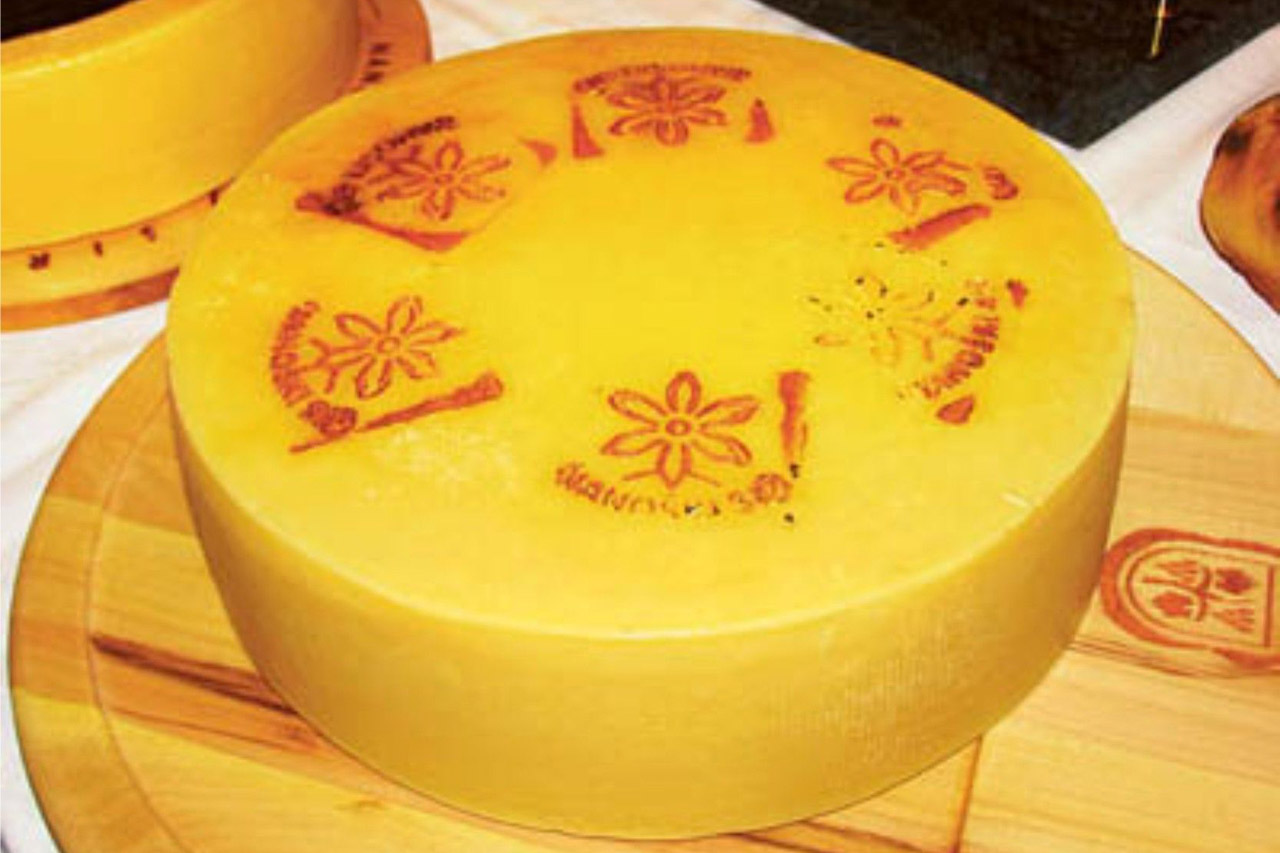Description
Nanoski Sir PDO is a hard cheese made from cow's milk. At least 80 % of the milk used in production is obtained from cows of the brown breed.
Production Area
The production area of Nanoski Sir PDO comprises the upper part of the Vipava Valley, in the area on the Slovenian-Italian border, specifically on the territory of the valleys of the Mocilnik stream and the Vipava River.
Production Method
The milk intended for the production of this cheese must be collected and stored separately and heat treatment must take place within 72 hours of the first milking. The milk is heated to a low temperature of 63 °C to 69 °C, after which a rennet solution is added and then mixed for five minutes. The milk is then left to coagulate before the curd is cut into squares and pressed into moulds with a diameter of 35 cm and a height of 15 cm. The fresh cheese is pressed, and fermentation takes place during pressing. Each wheel of cheese is then labelled on one side with the serial number (day and month) before being salted in a sea-salt solution for three days at a temperature of between 12 °C and 18 °C. The wheels are turned every day for three days to ensure that they are evenly salted, after which they are removed from the brine and placed on draining boards to dry. They are then put into the ripening room for at least 60 days, after which the wheel will weigh 8-11 kg. For the first 14 days of ripening, the cheese is wiped and turned over every three days, and from then on it is turned over at least once a week and wiped if necessary. When the cheese is at least 60 days old, the external appearance of the individual wheels is examined and those that meet the requirements are selected. Each wheel is then marked on one of the horizontal surfaces with the stamp bearing the symbol of a narcissus and the inscription 'Nanoski sir' in such a way that, when the wheel is cut into sections, each small piece contains part of the symbol of a narcissus.
Appearance and Flavour
Nanoski Sir PDO is wheel-shaped with a diameter of 32-34 cm and a height of 7-12 cm. The edge of the wheel is slightly convex. The cheese's interior is an intense yellow colour and has an elastic, flexible, smooth and solid consistency, with occasional, irregularly-shaped, small to medium-sized eyes. The rind is yellow with a brick-red to brown shade, with possible traces of mould and is smooth and dry, without imperfections and cracks. It has a clean, unobtrusive and characteristic aroma and a slightly piquant and pleasantly salty flavour, both of which become stronger with aging.
History
Nanoski Sir PDO is an evolution of the so-called "nanos" cheese which was produced on the Nanos plateau since the XVI century. The land register of the Vipava manor from this period contains evidence that those who rented the pastures partly paid the lords of the manor in cheese. The cheese was originally made with sheep's milk but after the Second World War sheep breeding and the art of cheese-making gradually decreased until eventually disappearing completely. In the Eighties things started to improve and the Vipava Dairy brought the tradition back to life, beginning with the production of Nanoski sir and using cow's milk due to the shortage of sheep's milk.
Gastronomy
Nanoski Sir PDO should be kept in a cool dry place, preferably in the refrigerator. This cheese is ideal as an ingredient in cold pasta dishes, salads and gratins, or as a side dish for hot dishes. It can also be eaten on its own with a full-bodied white wine, or, if very matured with a glass of red.
Marketing
The product is marketed as Nanoski Sir PDO. It is sold in characteristic green cardboard boxes which are ideal as a present.
Distinctive Features
As the cows are fed with pasture grass, hay and silage or cereals, Nanoski Sir PDO has a high mineral content, above all calcium.





